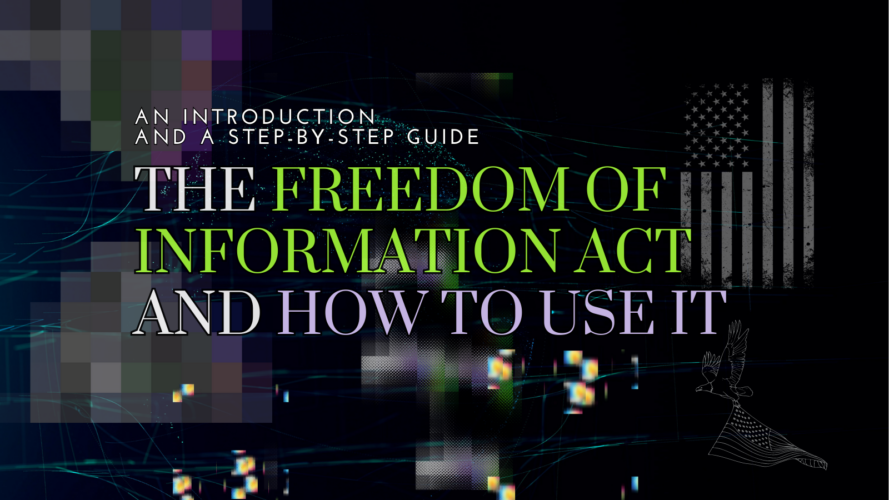On a sweltering day in July, 1966, a historic event unfolded in the hallowed halls of power in Washington, D.C. A monumental law was signed, one that would change the landscape of American governance and redefine the relationship between the people and their government. The law was called the Freedom of Information Act (FOIA), and its birth was no accident, but a result of years of tireless advocacy and momentous shifts in the social and political fabric of the nation.
Let’s take a step back and embark on a journey to the tumultuous 1960s, when America was riding on waves of rapid change. It was an era of escalating Cold War tensions, a protracted conflict in Vietnam, and groundbreaking civil rights movements that were shaking the very core of society. With growing uncertainties on all fronts, there was an increasing disillusionment amongst the citizenry about the lack of transparency in the government’s dealings. This sentiment was particularly prevalent in the press, who were often met with opaque responses and bureaucratic walls when they attempted to pierce the veil of secrecy around governmental affairs.
The spark that lit the flame of FOIA began in the unlikely form of John Moss, a Congressman from California. For Moss, the quest for governmental transparency was personal. He had faced repeated stonewalling while investigating the dismissal of a federal employee and was frustrated by the impenetrable shroud of secrecy that engulfed the government’s inner workings. Fueled by this personal experience, he decided to dedicate himself to ensuring such obfuscation would never occur again.
Moss spent over a decade on his mission, championing the cause for transparency and accountability in the halls of Congress, pushing for a law that would give citizens the right to access federal records. His vision was not universally accepted, and he faced significant pushback. Several critics, especially those within the government, were concerned that such transparency would compromise national security and hamper administrative efficiency. However, Moss was unwavering. He believed in a democracy where citizens had a fundamental right to scrutinize their government’s activities. After years of persistent effort, his bill finally saw the light of day.
After rigorous debates and revisions, the FOIA was passed by the Congress in 1966. The law was revolutionary in that it established the presumption of public access to government information. For the first time in American history, the burden of proof was shifted onto the government to justify why certain information should be kept confidential. It was no longer enough for the government to simply claim that the information was “classified”. Now, they had to demonstrate how its disclosure would harm national security or disrupt governmental operations.
President Lyndon B. Johnson, although reportedly ambivalent about the bill, signed it into law on July 4th, 1966 – a symbolic date for a law championing democratic transparency. With a stroke of a pen, he ushered in a new era of open government.
Since then, the FOIA has been a powerful tool in the hands of journalists, researchers, and ordinary citizens, enabling them to hold their government accountable and fostering a culture of transparency that has seeped into every layer of public administration. It has undergone several amendments, further strengthening the public’s right to information and keeping pace with the ever-evolving societal and technological landscape.
The journey of the Freedom of Information Act stands as a testament to the tireless work of advocates like Moss and their firm belief in the pillars of democracy: transparency, accountability, and the right of the people to know. This monumental legislation is an enduring reminder that, in a functioning democracy, information is not a privilege, but a right.
Who Can You Send A FOIA Request To?
Under the FOIA, an “agency” is defined as any executive department, military department, government corporation, government-controlled corporation, or other establishment in the executive branch of the government, including the Executive Office of the President. Additionally, it also applies to any independent regulatory agency.
To break it down, the FOIA essentially covers all federal departments, which includes but is not limited to the Department of State, Department of Defense, Department of Health and Human Services, Department of Homeland Security, Department of Justice, and Department of Education. Each of these departments, alongside others, is required to disclose any information requested under the FOIA unless it falls under one of nine exemptions which protect interests such as personal privacy, national security, and law enforcement.
On a more granular level, the FOIA also encompasses a myriad of government agencies and offices within these departments. These range from the Federal Bureau of Investigation (FBI) and Central Intelligence Agency (CIA) within the Department of Justice, to the Federal Emergency Management Agency (FEMA) within the Department of Homeland Security, or the Food and Drug Administration (FDA) within the Department of Health and Human Services.
Moreover, the Act applies to government-controlled corporations and independent regulatory agencies such as the Environmental Protection Agency (EPA), Securities and Exchange Commission (SEC), and Federal Communications Commission (FCC). Each of these entities is subject to FOIA requests and obligated to comply, ensuring a level of accountability across a broad swath of governmental functions.
CONTINUE READING THIS INFORMATIVE AND ACTIONABLE ARTICLE, Step by Step instructions below: https://reclaimthenet.org/the-freedom-of-information-act-and-how-to-use-it
By Dan Frieth – Aug 7, 2023




Add comment